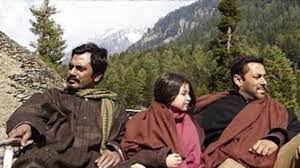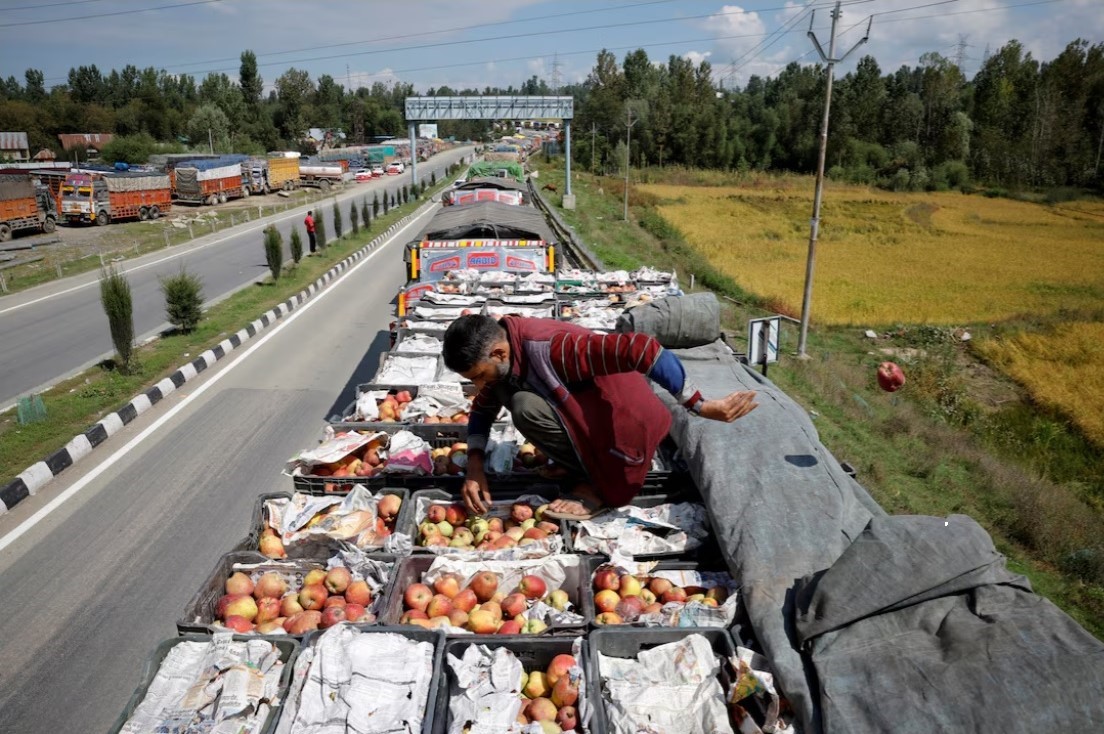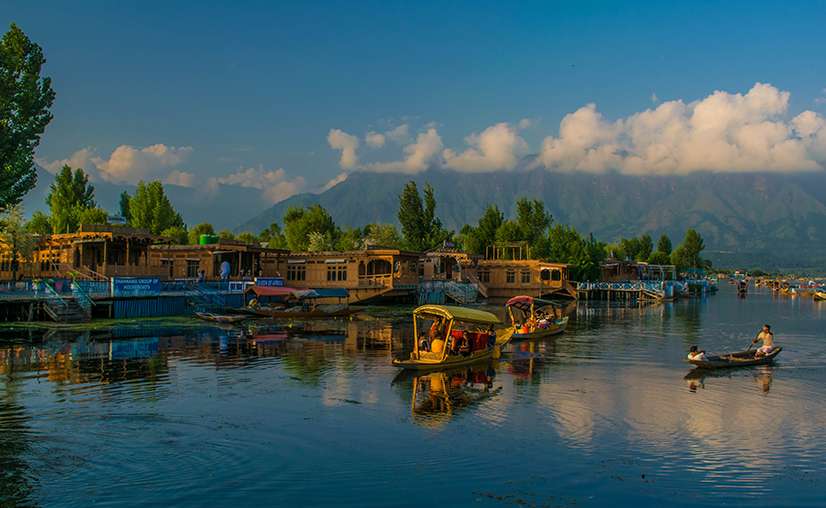Following the Baisaran attack that halted filming in Pahalgam, a Tollywood crew returns to Aru Valley—reviving cinematic hopes and spotlighting Kashmir’s enduring allure despite security setbacks.
By: Javid Amin | 03 November 2025
The valleys of Kashmir, long celebrated for their breathtaking natural beauty, have also faced repeated turbulence — both natural and man-made. In recent months, the region has been grappling with the aftermath of the dreadful April 22 attack in the meadow of Baisaran Valley, near Pahalgam, which left 26 tourists dead.
But now, a new sign of hope is emerging. A crew from the South Indian (Tollywood) film industry is back in Kashmir — shooting a Telugu-language comedy film in the alpine splendour of Aru Valley, approximately 15 km from Pahalgam. This return marks a meaningful step towards the revival of both tourism and the local film-shooting economy.
In this article, we’ll explore each facet of the story: the backdrop of the attack and its impact, the significance of the film crew’s return, what this means for local livelihoods, tourism prospects, film industry trends, and the cautious optimism that now permeates the region.
The April 22 Attack in Baisaran: Context and Impact
01. What happened
On 22 April 2025, within the lush meadows of Baisaran Valley near Pahalgam (in the Anantnag district of the Indian Union Territory of Jammu & Kashmir), gunmen opened fire on a group of tourists. The attack reportedly killed at least 26 people and injured many more.
According to witness reports and media coverage:
-
The site was remote — accessible by foot or pony only.
-
The attackers emerged from dense pine forests around the meadow.
-
The attack was described by local officials as “much larger than anything we’ve seen directed at civilians in recent years.”
02. The scale and consequences
This was a jarring departure from previous patterns of violence in the region, which typically targeted security forces, rather than tourists.
The incident triggered:
-
Strong diplomatic and military reactions.
-
Security closures of tourist zones and restrictions on access for more than three months in some areas.
-
A sharp chill in tourism-related business, which had been rallying.
03. Why it mattered for tourism & local economy
Tourism has long been considered one of the key economic lifelines for this mountainous region: hotels, restaurants, local transport (ponies, taxis), guides and adventure services all depend on visitors. The attack struck directly at this ecosystem.
A recent analysis pointed out that while civilian deaths in many districts of Kashmir had declined since 2020, the attack undermines the fragile sense of “positive peace” that tourism-growth had helped foster.
In short: the region’s narrative of comeback and normalcy took a serious hit.
Also Read | Kashmir Honeymoon Packages – Romantic Escapes for Couples
Re-enter the Film Crew: Tollywood Shoots in Aru Valley
01. Why Aru Valley?
Located about 15 km from Pahalgam, Aru Valley is a scenic plateau through which the Vidder (Lidder) River flows, surrounded by pine forests and high pastures. It is one of Kashmir’s more picturesque yet under-visited locales.
For the film team, the choice was compelling:
-
A “beautiful location” that the director, Vimal Krishna, said was suited to the story’s demands.
-
After scouting in July, the team concluded the safety and logistics were workable in the valley.
-
The shoot is a Telugu-language comedy, character-driven, centered on an “overthinking protagonist” — necessitating a setting both visually captivating and emotionally evocative.
02. What the crew says
Casting director Umer Yousuf (also known as S K Sam) of Casting Kashmir, along with colleague Danish Khan, confirmed that the team had been filming in Aru for the past 12 days. They emphasised that this is more than a film shoot — it’s a signal of revival.
“After the Baisaran incident, everyone in Kashmir suffered, but we didn’t lose hope. We convinced the marketing teams to come back and shoot.” — Umer Yousuf
Malayalam actor Merit Philips, who plays a Kashmiri girl in the movie, said:
“There is nothing to fear. We’ve been taken care of very well. I love this place. The people are hospitable and warm.”
Tollywood actor Rag Mohar, playing a Telugu tourist who falls in love with a Kashmiri girl, noted that the working environment has been “very good” and that they’re enjoying their time shooting in Kashmir.
03. Significance of returning to shoot
The return of a film crew is significant in several ways:
-
It signals confidence in local security and logistics, which had been shaken.
-
It brings income and jobs to local service providers: hotels, restaurants, transport, pony operators, local labour.
-
It creates publicity for the region: not just “tourist visuals” but film exposure can have multiplier effects for tourism marketing.
-
It sends positive vibes to film-makers that Kashmir is open for business.
Also Read | Kashmir Travel & Wedding Guides – Tips, Itineraries & Ideas
Local Economic Ripple Effects: Why This Matters Beyond the Camera
01. Local livelihoods getting a boost
According to Umer Yousuf:
“Hoteliers, restaurant owners, ponywallas, taxi operators, and adventure service providers are all happy. We had no work after the April 22 attack, but we didn’t give up.”
This underscores how tightly tourism, adventure services and film work are inter-linked in this region.
When film crews arrive:
-
Accommodation bookings increase (for cast & crew).
-
Catering and local hire support staff are engaged.
-
Transport (taxis, jeeps) are needed for shoot logistics.
-
Peripheral services like pony rides, local guides, equipment transport get engaged.
All this translates into cash flow to the valley’s small business ecosystem.
02. Cautious optimism from locals
Local shopkeeper Muhammad Yousuf in Pahalgam observed:
“Even though it’s too early, at least the start has been made.”
That’s a realistic take: one film crew alone does not guarantee full revival; but it is a positive sign. It helps shift narrative from “shutdown” to “re-opening”.
03. Tourism revival: a symbiotic match
The film shoot in Aru Valley doesn’t just serve the film industry: it honours synergy with tourism.
-
Tourists often follow film locations (“film tourism”).
-
Media coverage of the shoot introduces Aru and Pahalgam to new filmmaker- and tourist-audiences.
-
As the shoot progresses, local amenities (hotels, eateries) ramp up readiness — which benefits incoming tourists.
Given that the tourism sector suffered a big stop after the Baisaran attack, the shoot’s arrival helps energise that engine once again.
Also Read | Kashmiri Handicrafts & Heritage Shopping Guide | Pashmina, Walnut Wood, Paper Mache & More
Film Industry Trends in Kashmir: The Bigger Picture
01. Past film shoots & Kashmir’s appeal
Kashmir — its lakes, meadows, rivers, alpine forests — has long been a desirable location for film-makers in India. The mystique of the “Paradise on Earth” label, combined with unique terrain, draws filmmakers seeking scenic backdrops.
However, security concerns, access difficulties, and logistical challenges (remote terrain, limited infrastructure) have always been constraints.
02. Why the hiatus after the attack
The April 22 attack triggered a near-shutdown of film-shooting in the region:
-
Crews cancelled or postponed schedules fearing safety risks.
-
Marketing & location-scouting agencies became reluctant to recommend Kashmir.
-
Local infrastructure (hotels, guides, service providers) experienced a downturn.
03. The current shoot as a signal
The Tollywood crew’s arrival suggests:
-
A recalibration: film-makers are willing to consider Kashmir again, provided assurances of safety, logistics and infrastructure.
-
It may encourage more regional film units (Telugu, Tamil, Malayalam, Hindi) to consider Kashmir as a location once more.
-
It can help rebuild local film-industry infrastructure: local casting agents, production support firms, service providers.
04. Challenges ahead
-
The security perception still needs strengthening. A single shoot won’t instantly overcome apprehension.
-
Infrastructure investment (transport, lodging, communication) needs to keep pace.
-
Sustainability: film shoots are episodic — translating one shoot into ongoing business requires strategy, marketing, repeat business.
-
Regional competition: Other scenic locations (in India and abroad) may offer safer or cheaper alternatives, so Kashmir must sharpen its value proposition.
Also Read | A Day in Srinagar – Houseboats, Chinars & Kahwa
Tourism Recovery: What This Means for Pahalgam & Beyond
01. Tourism hit by the attack
Following the Baisaran attack, tourist flow was curtailed: several licensed camp-sites and meadows were closed for more than three months due to security concerns. Local businesses reported “no work” for a period. (Summary info)
The broader tourism-industry logic: when perception of risk rises, even if actual risk is managed, tourists stay away.
02. Signs of revival
With the film crew shooting in Aru, several things are underway:
-
Access is being enabled and monitored, signalling operational-normalcy.
-
Local service providers (hotels, pony operators, guides) are back in business.
-
Media coverage of the shooting in scenic locales promotes destination awareness.
-
Local administration’s security support and coordination for a film shoot indicates seriousness about safety.
03. What tourists should know
If you’re considering visiting:
-
Choose well-known meadows and valleys with current open status (confirm local admin/ tourism office).
-
Check accommodation and service availability in advance (since demand may pick up).
-
Respect local norms: preserving environment, cultural sensitivity.
-
Consider hiring local guides and services — this helps local economy directly.
-
Timing matters: autumn (post-monsoon) or early spring can be ideal for views and fewer crowds.
04. The risk-perception factor: managing expectations
It’s important to be realistic: while the film shoot is a positive sign, local conditions are still evolving. Security arrangements are emphasised by local stakeholders themselves as key. For example, Umer Yousuf noted:
“The government supported us, and the security arrangements have been good.”
For the visitor, this means: do not ignore advisories, stay updated on local conditions, but don’t necessarily assume things are back to “business as usual” yet.
Also Read | Houseboat Stay in Srinagar – Ultimate Guide to Dal Lake Luxury (2025 – 2026)
Kashmir’s Film & Tourism Ecosystem: Interlinked Futures
01. Why film and tourism are natural allies
-
Films showcase locations to wide audiences — creating “wish-destination” appeal for tourists.
-
Tourism provides the economic base and infrastructure that film-crews require (hotels, transport, local service economy).
-
Local communities benefit from both simultaneous visitors: tourists and film-crews — diversifying income sources.
-
Government-policy can treat film-shoots as strategic “destination-promoters”.
02. What Kashmir needs for a sustained comeback
From the evidence and local voices, the following emerge as priorities:
-
Infrastructure upgrading — better roads, connectivity, lodging standards, equipment-rental support.
-
Security assurance — visible, reliable arrangements to reassure film-crews, tourists and local stakeholders.
-
Marketing & promotion — both for tourists and film-makers: show that good things are happening.
-
Local capacity building — enhance local skills in casting, production-support, guiding, hospitality.
-
Sustainability and diversification — eco-tourism, off-season tourism, film-tourism tie-ups.
-
Community engagement — ensure local businesses, guides, pony-operators are included and benefit, so they have “ownership” in revival.
03. Spotlights of hope
-
The film shoot in Aru Valley is one concrete “first mover” event signalling revival.
-
Local stakeholders are expressing hope, yet also caution — indicating realism rather than hubris.
-
Government support and security arrangements appear to be making a difference according to sources.
Also Read | How to Plan Your First Trip to Kashmir – Ultimate 2025 Travel Guide
On the Ground: Voices & Atmosphere
01. Locals on the mood
-
Umer Yousuf (casting director): “We had no work after the April 22 attack, but we didn’t give up.”
-
Local shopkeeper Muhammad Yousuf: “Even though it’s too early, at least the start has been made.”
These quotes reflect local optimism tinged with caution.
02. Film-crew impressions
-
Merit Phillips: “There is nothing to fear. We’ve been taken care of very well. I love this place. The people are hospitable and warm.”
-
Rag Mohar: “The atmosphere here is very good, and we’re enjoying our time shooting.”
The fact that visiting actors feel safe and welcomed contributes to building the “safe region for filming” narrative.
03. Business community impact
-
Hoteliers, restaurant-owners, pony operators, taxi drivers are seeing renewed interest and work.
-
As one of the film team members noted: “Hoteliers, restaurant owners, ponywallas, taxi operators, and adventure service providers are all happy.”
This underlines the tangible ripple effect of a single film shoot — far beyond simply cameras rolling.
Broader Significance: What This Could Mean for Kashmir
01. Narrative shift
The story of Kashmir often oscillates between “beauty & hope” and “conflict & risk”. The return of a film-crew offers a narrative shift: one of active revival rather than mere survival.
It suggests that despite the tragic Baisaran attack, the region is determined to move forward.
Furthermore, this can help rebuild public perception — among Indian domestic tourists and film-productions from other regions.
02. Economic diversification
Tourism alone is vulnerable to external shocks (weather, security, geopolitics). The coupling of film-shooting and tourism offers diversification:
-
Film-crews bring high-value short-term contracts and associated services.
-
Tourists bring volume over longer periods.
-
Local businesses that serve both can become more resilient.
03. Cultural outreach and soft-power
When a South Indian film picks Kashmir as a location, it extends the reach of Kashmiri landscapes into new cultural markets (Telugu, Malayalam, etc).
That cross-regional exposure can foster greater integration of Kashmir into India’s broader cultural ecosystem, and potentially reduce perception of isolation.
04. Political and social sub-text
Given that the Baisaran attack had deep geopolitical and security repercussions (India-Pakistan tensions, etc) — see references: — the returning film-crew has symbolic importance: a statement of resilience.
It sends a message that local people, government and industries are not succumbing to fear.
Locals like Umer Yousuf emphasise this point: “We didn’t give up.”
Also Read | Kashmiri Cuisine: Traditional Recipes & Culinary Guide
What to Watch Going Forward
01. More film-shoots
Will other film production houses (Hindi, regional) follow this Tollywood example? A trend here would deepen the impact.
Key factors enabling this: logistics, incentives, local production-support networks, safety protocols.
02. Tourist arrival trends
Monitoring actual tourist footfall in the coming months will indicate whether this shoot translates into broader tourism revival.
Important sub-questions:
-
Are hotel bookings up?
-
Are adventure services (trekking, pony rides) picking up?
-
Is the seasonality shifting?
-
Are domestic tourists (from Indian states) returning in larger numbers?
03. Sustained stability of security & infrastructure
A one-off shoot is promising; but sustained revival requires consistent access, stable security, functioning infrastructure (roads, telecom, lodging).
If another incident undermines confidence, it could set back momentum.
04. Local inclusion & equitable benefit
For long-term sustainability, local communities should benefit meaningfully — not just in the form of occasional work for the shoot, but ongoing capacity building and business opportunities.
Tracking whether local guides, pony operators, transport providers, caterers are integrated into this revived economy is key.
Also Read | Bagh-e-Gul-e-Dawood: Kashmir’s New Autumn Jewel Blossoms in Srinagar
Bottom-Line
The arrival of a Tollywood film crew in Aru Valley after a six-month hiatus is more than just a film-shoot. It is a harbinger of recovery for the valley of Pahalgam and beyond. Against the sombre backdrop of the April 22 attack in Baisaran — a tragedy that shook not only Kashmir’s tourism ecosystem, but also the sense of security for visitors and local communities — the shoot signals resilience, revival and hope.
For the tourists, this means Kashmir is opening up again — but with the note of caution that the region is still on its recovery path. For local businesses, the film shoot brings welcome activity and renewed cash flow. For the film industry, it offers a renewed location prospect and a shot at rebuilding confidence in Kashmir’s terrain as a work-friendly destination.
The journey ahead will not be without its bumps. Security perceptions need constant reinforcement; infrastructure upgrades must keep pace; film-industry linkages and tourist flows must build steadily. But if the momentum holds, this could mark the turning point from pause to progress in Kashmir’s intertwined film-tourism economy.
As one local casting director put it:
“Now, as we begin this new project here, we hope more film crews will return to Kashmir.”
Indeed, the cameras are rolling. The meadows of Kashmir are being captured again. And, perhaps more importantly, the valley is once again looking outward with optimism.



